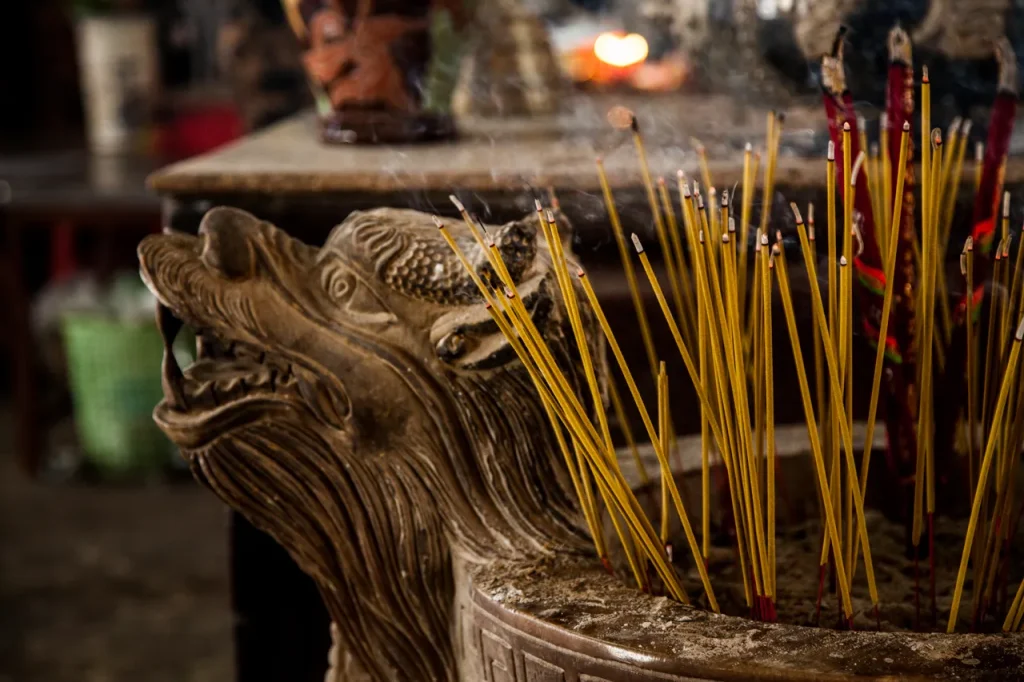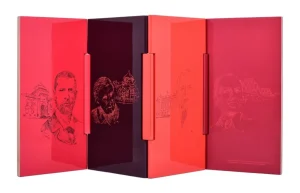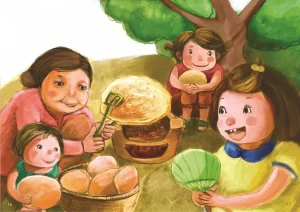The Mekong Delta is a wonderful mix of cultures, languages and religions. In areas with larger ethnic Khmer communities, especially in villages close to the border with Cambodia, Khmer temples are not uncommon, with their intricate stonework and distinctive pointed roofs.
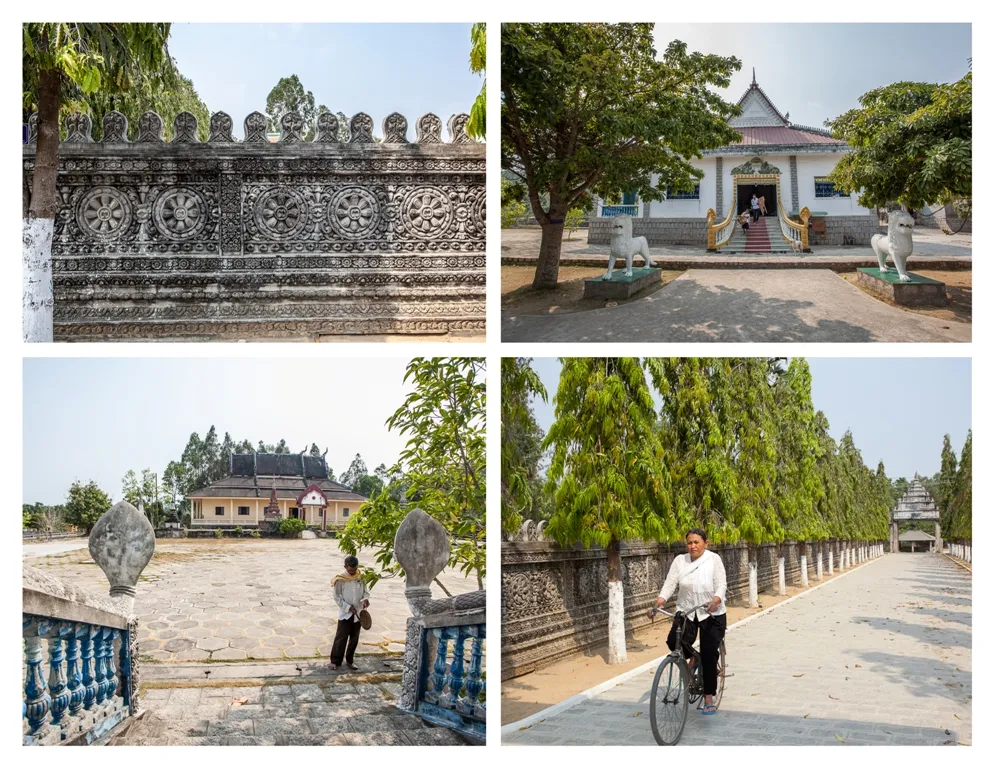
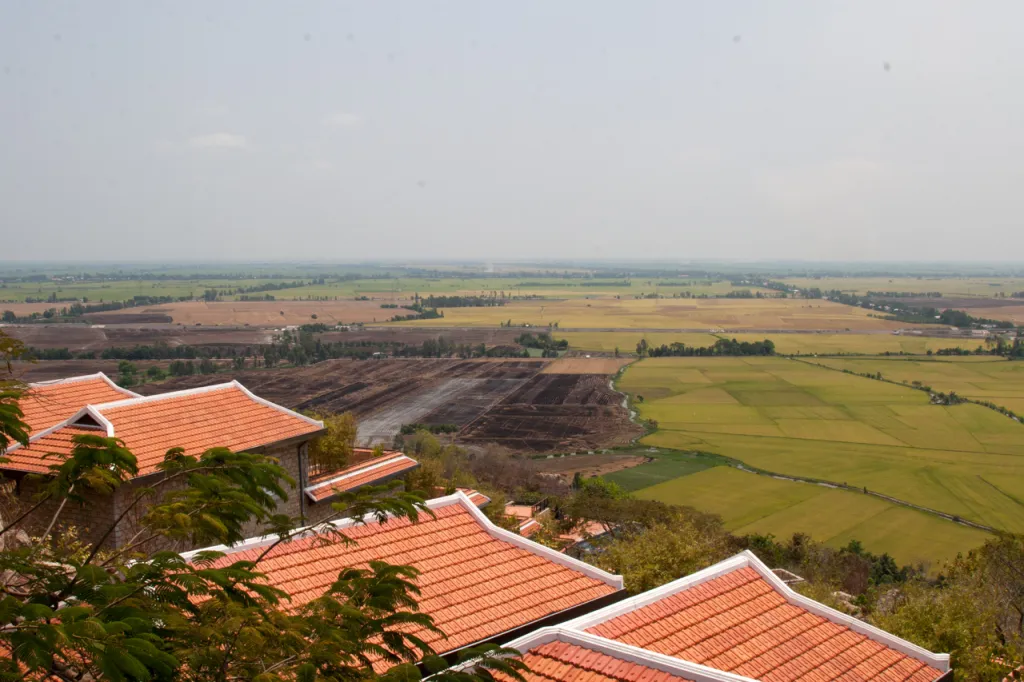
Perhaps it’s the spirituality of communing with nature that has made this mountain the site of dozens of temples. Or maybe it’s the fact that Chau Doc, on the border with Cambodia, has served as a melting pot of religions including Cham, Buddhism, Hinduism and mother-goddess worship.
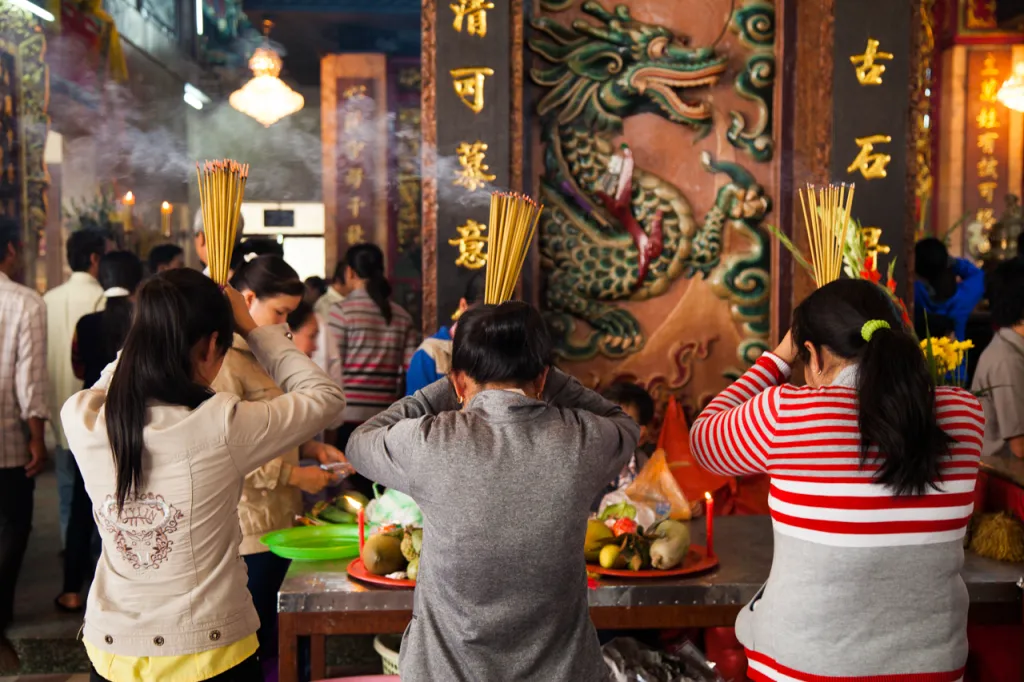
One of the temples that highlight this syncretic mix is the Tay An temple, at the base of Nui Sam.
Built in 1847, this colorful temple features architectural and decorative elements taken from the Cham, Indian, Vietnamese, and Chinese cultures.
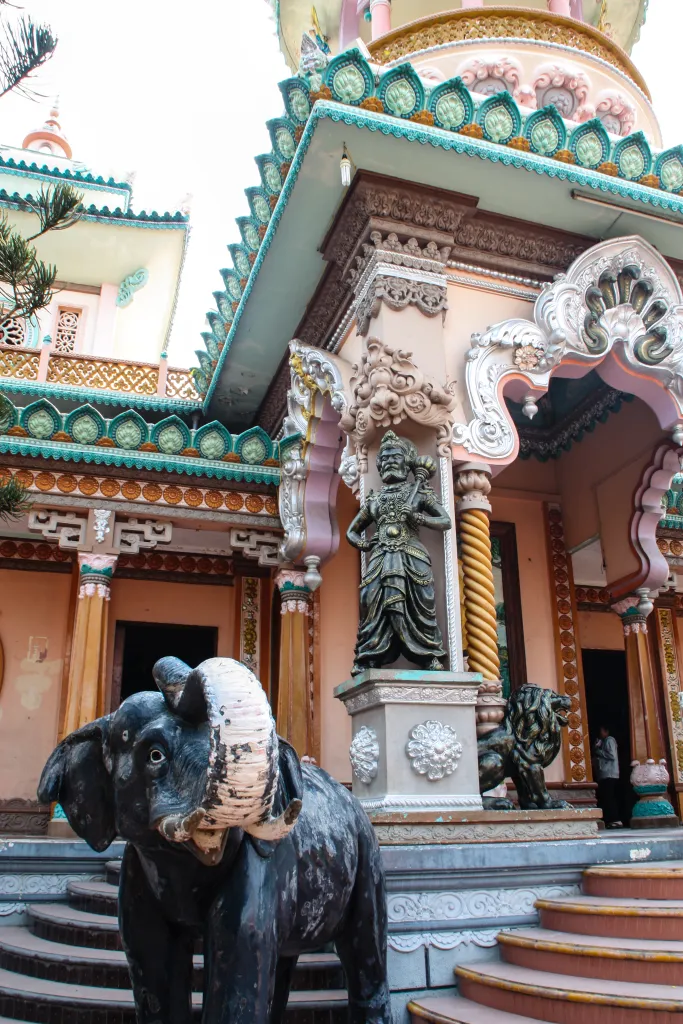
A closer look at the roof reveals Khmer nagas, or half-cobra, half-human demigods and apsaras, or angels. Statues take on a decided non-Vietnamese look both in physical features and clothing.
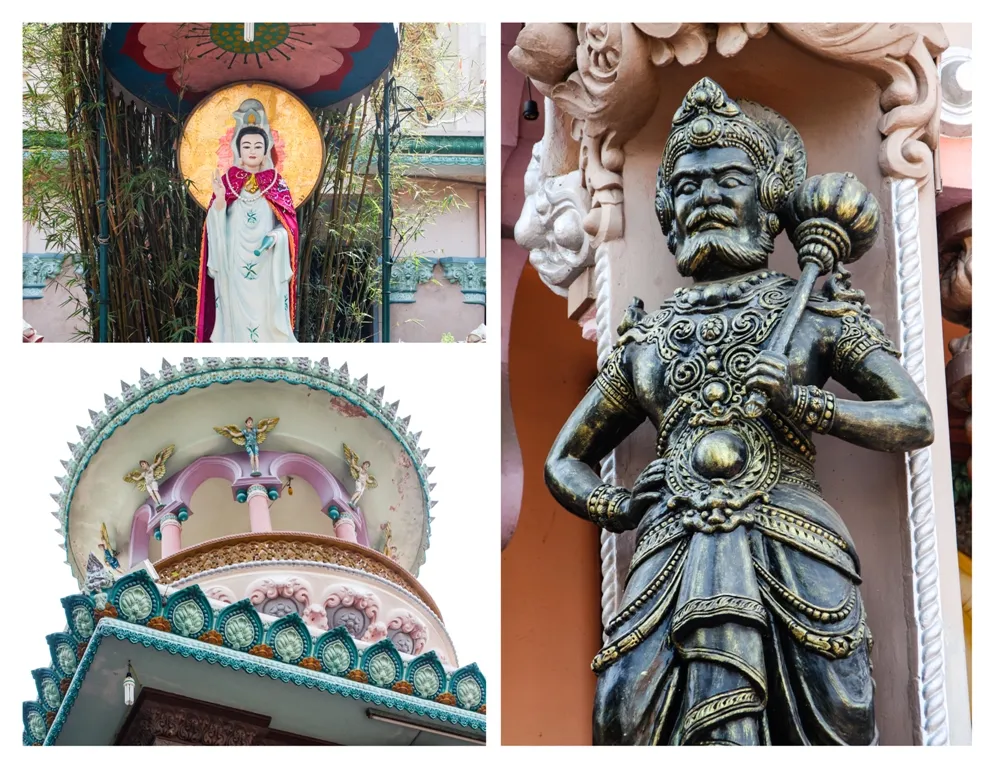
Nui Sam, both on the mountain itself and at its base, houses myriads of temples and shrines, but the most famous of them all is the Lady Xu Temple. Legends and oral traditions abound of this sacred, slightly larger than life-sized statue (photography of the statue itself is not allowed). She has mocha-colored skin, and a slight smile lights up her broad face.
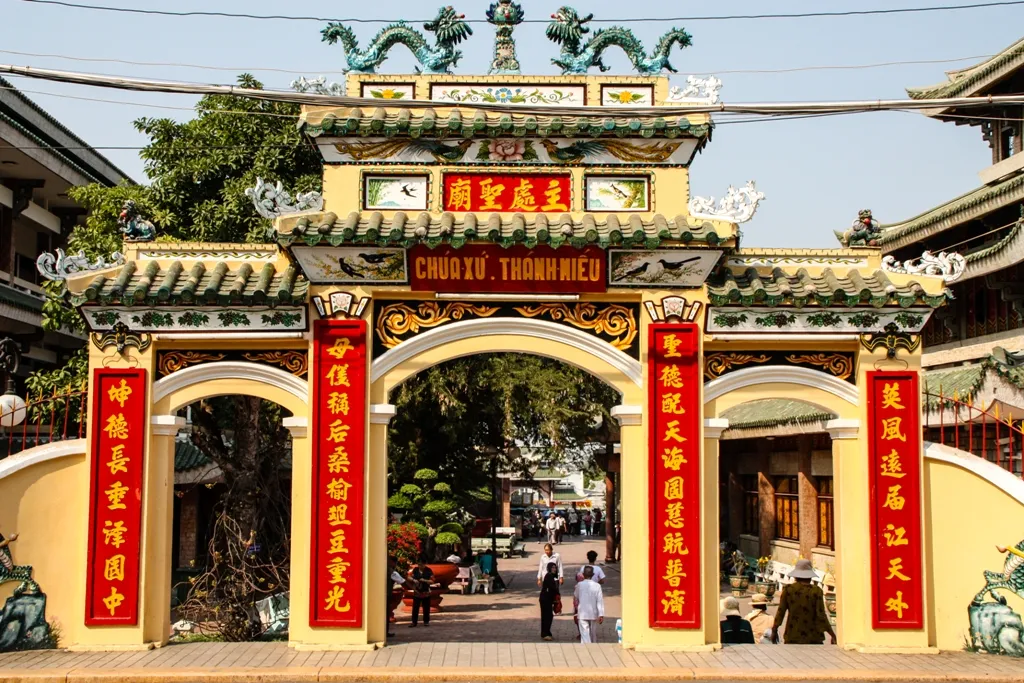
Some say it’s actually a statue of Shiva from the 6th century, possibly by the Oc Eo civilization, while others say it’s a Khmer male Buddha statue, and painted over by the Vietnamese into a female deity.
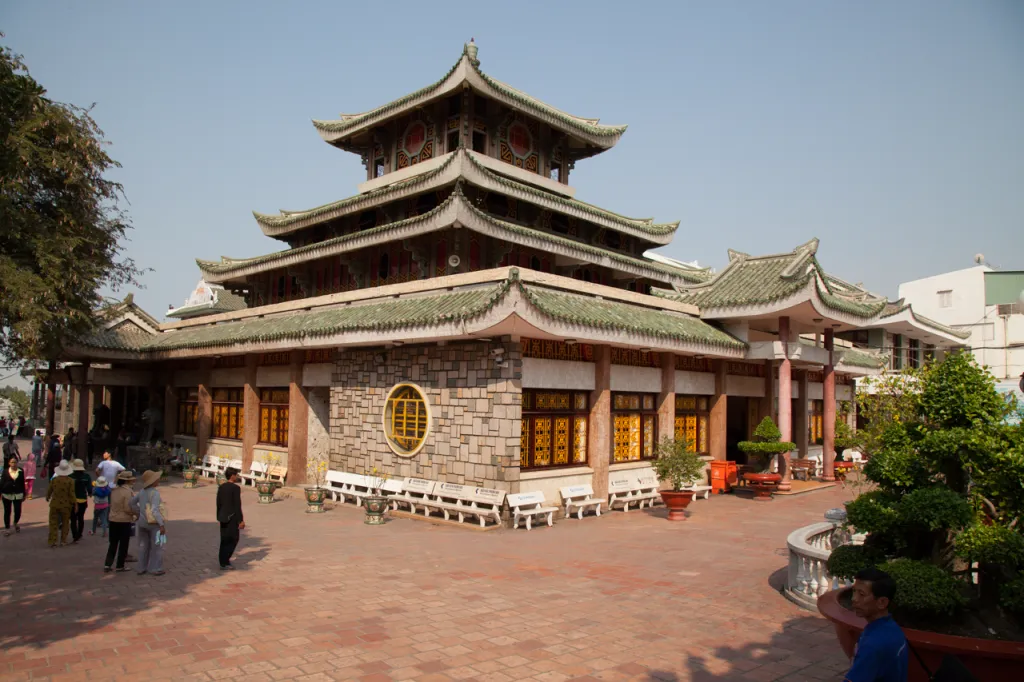
The most enduring legend, though, is that an Indian prince found his way to Nui Sam centuries ago and erected a statue of the Land Goddess which he had brought from India. One day, a gang of bandits found the statue on the mountain top and wanted to take it away with them but they could hardly move it. Angry, they smashed the left arm of the statue.
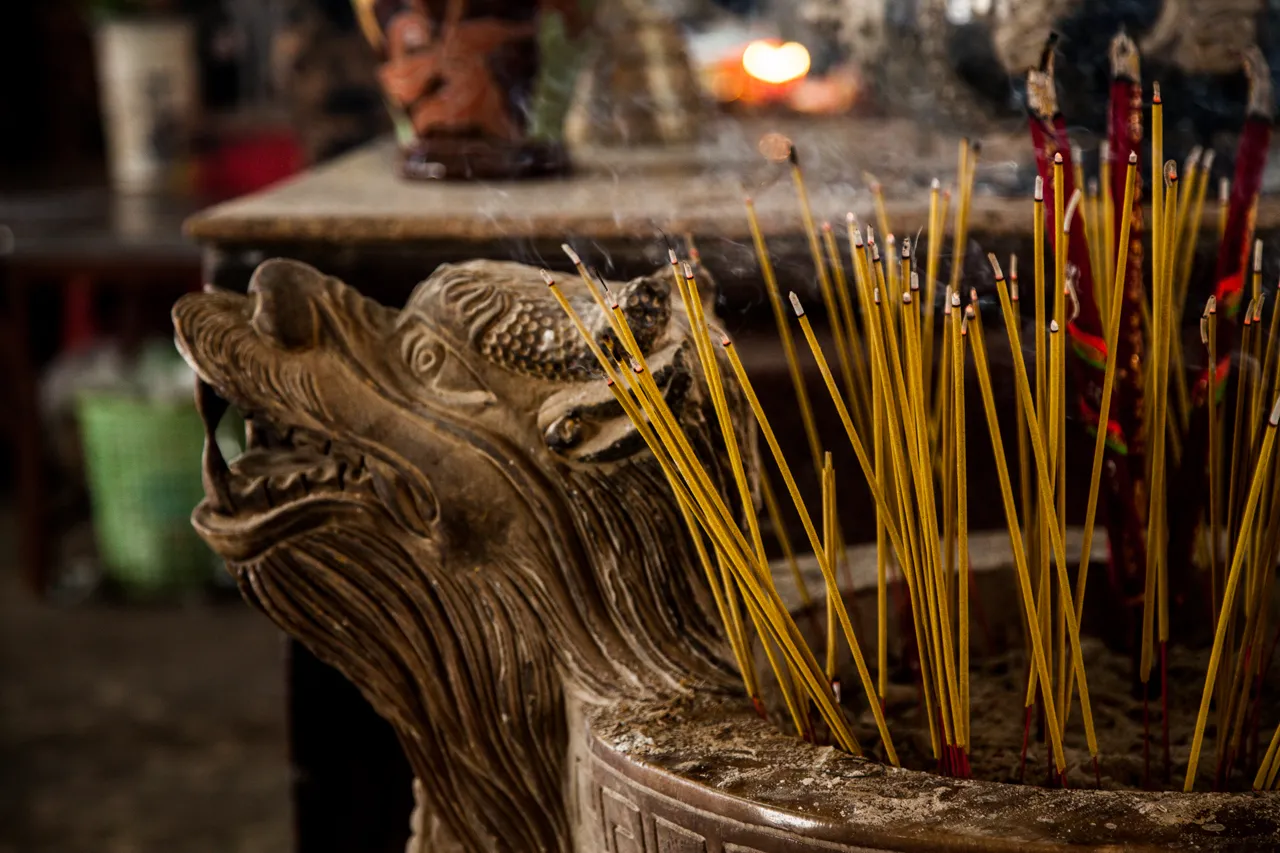
Villagers later found the statue and wanted to bring it down the mountain to worship but they could not move it either. It is said that the Goddess had a woman, a spirit medium, tell the villagers that she was the Holy Land Mother and that it would take nine virgins to bring her down. When the requisite maidens came to the site, the statue became so light that they could easily carry it down the mountain.The villagers then built a temple in her honor in 1820-1825 in hopes that she would bring them better crops and better lives.
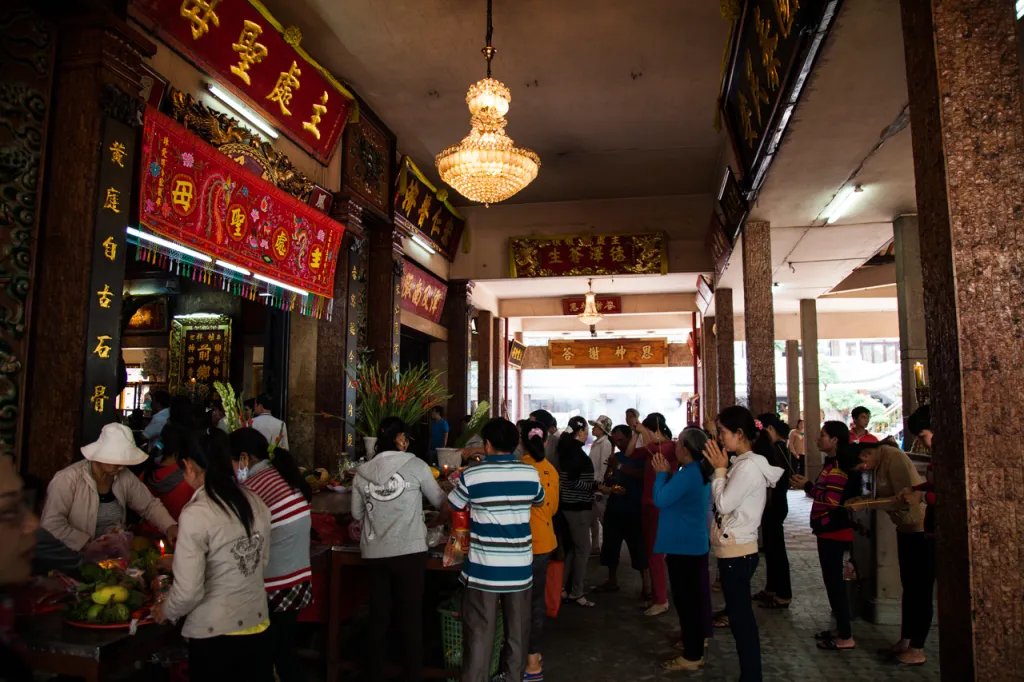
The true origin of the Lady Xu statue likely lies somewhere in between the legends. Nevertheless, upwards of two million pilgrims journey to the base of Nui Sam for her annual festival (usually in May).
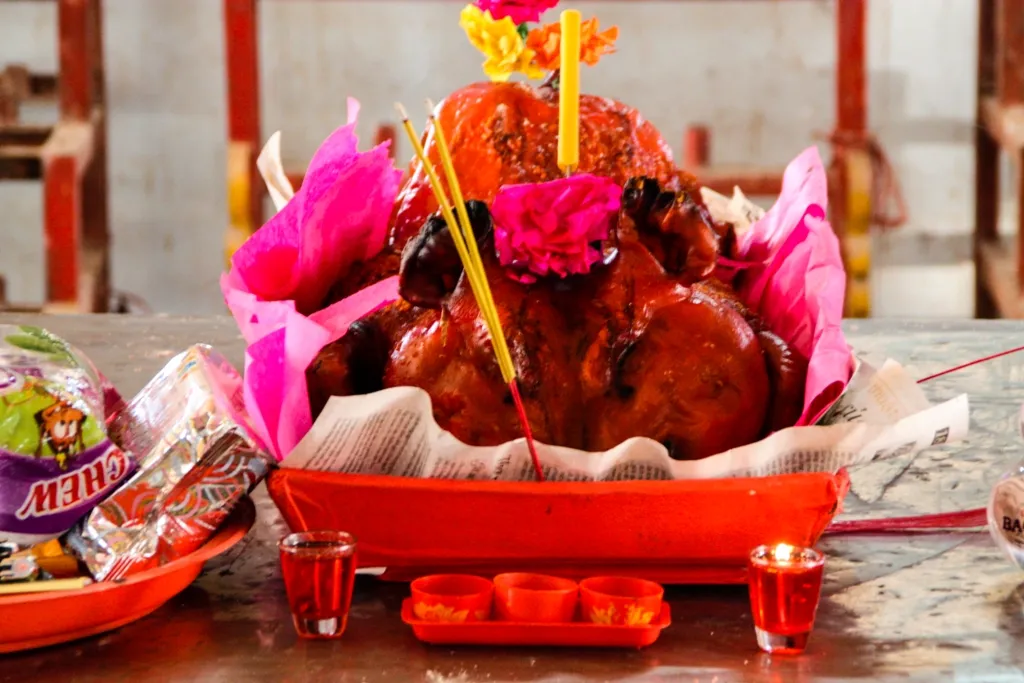
“My mother came here to pray for my grandmother’s recovery, and it worked,” says Nghia, one of the temple workers, as he sorts out baskets of fruit and whole roasted pigs brought by the devout who burn paper costumes and printed prayers in the courtyard.
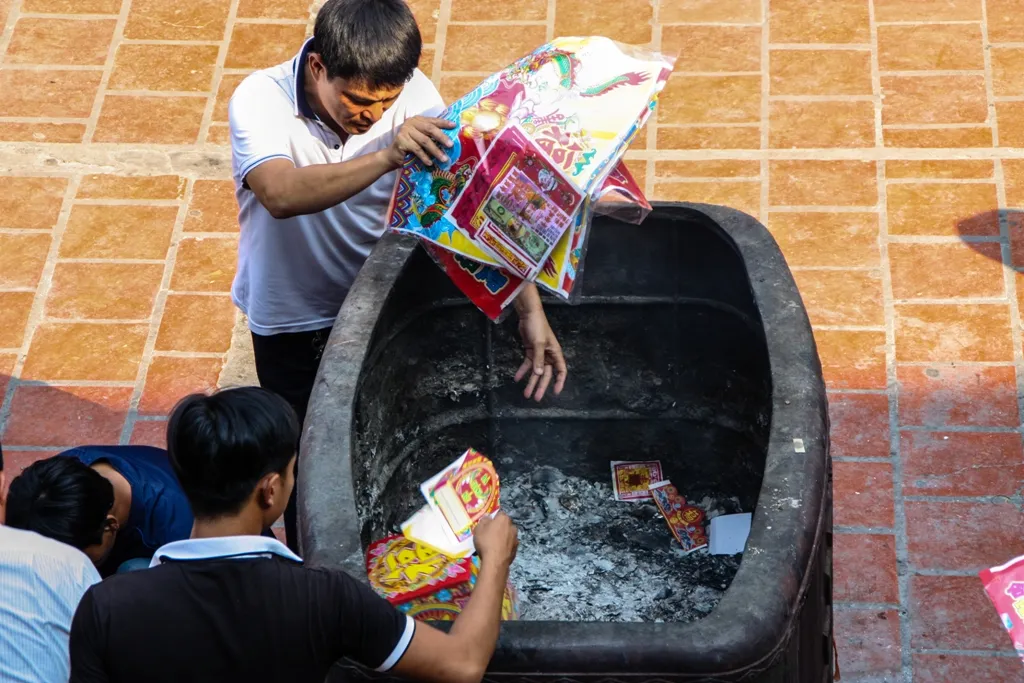
Stacks of rice and other gifts line the inner area of the lotus-shaped temple, in addition to a showroom of colorful sequined robes and ornate headdresses used as part of the annual ceremony which includes bathing and re-dressing the statue. Plaques and gifts also fill the room, donated by people whose prayers have been answered.
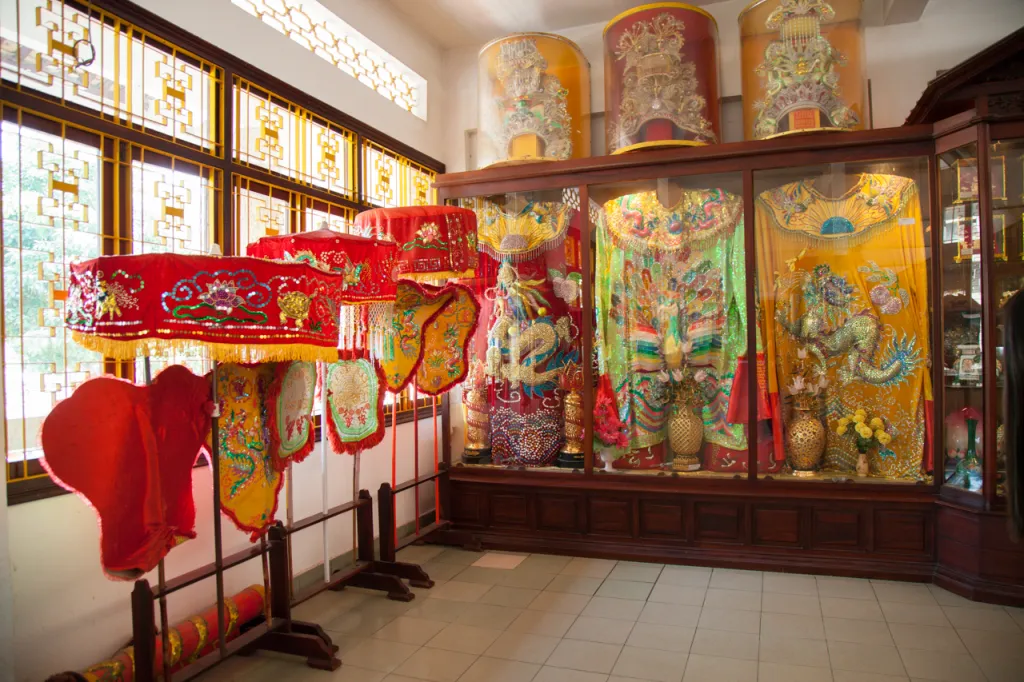
Bits of cloth from older robes are placed in envelopes as lucky charms for people to take away. “I don’t know if it’s true, but people say that Lady Xu gets fatter every year. They have to change the measurements of her costumes,” says Linh with a smile. “I’m not sure if I believe, but it never hurts to ask.”
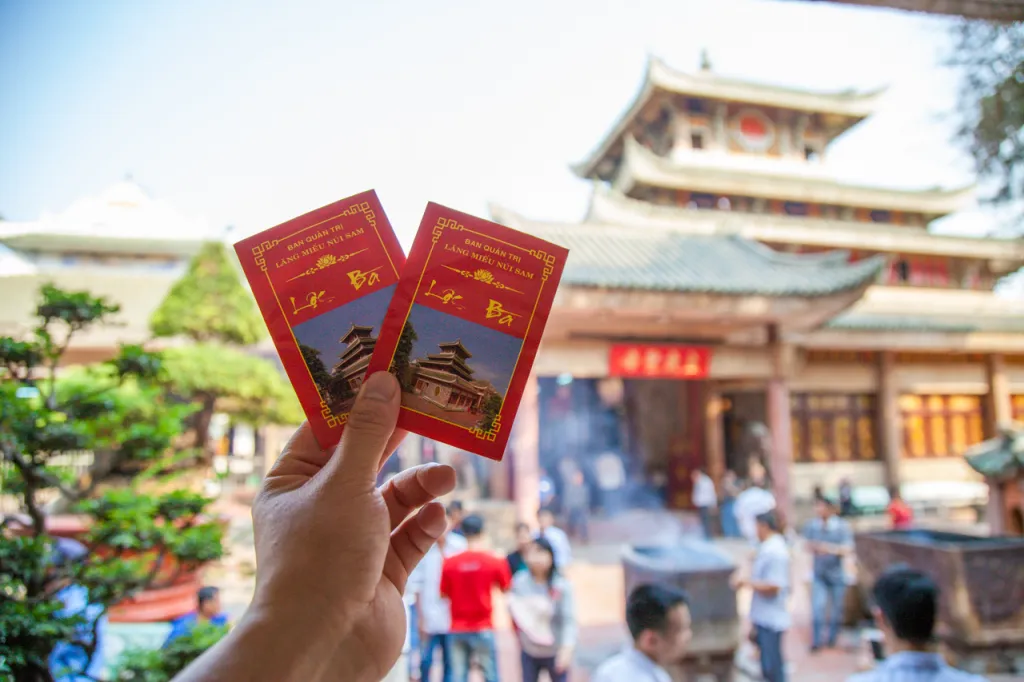
If you visit:
? Please dress modestly.
? The Lady Xu Temple and the Tay An Temple are less than a 10 minute walk apart. Shops line the road between the two selling baskets of fruit, whole roasted pigs and other items. There is even a service for “renting” a roasted pig!
? The little red envelopes containing a snippet of one of Lady Xu’s dresses are available in the small alcove to the right of the main statue. There is a limit of two per person and a contribution of VND 20,000 (~ USD 1) per envelope is suggested. Vietnamese view these as worthy gifts, especially if they aren’t able to travel to the temple themselves.
? The showroom is upstairs in the building opposite the temple. Visitors are welcome to tour.
? The Vietnamese believe that releasing animals is a meritorious act. Vendors outside the temple sell sparrows for people to release. If you want to participate, make sure to confirm the price before releasing the birds!
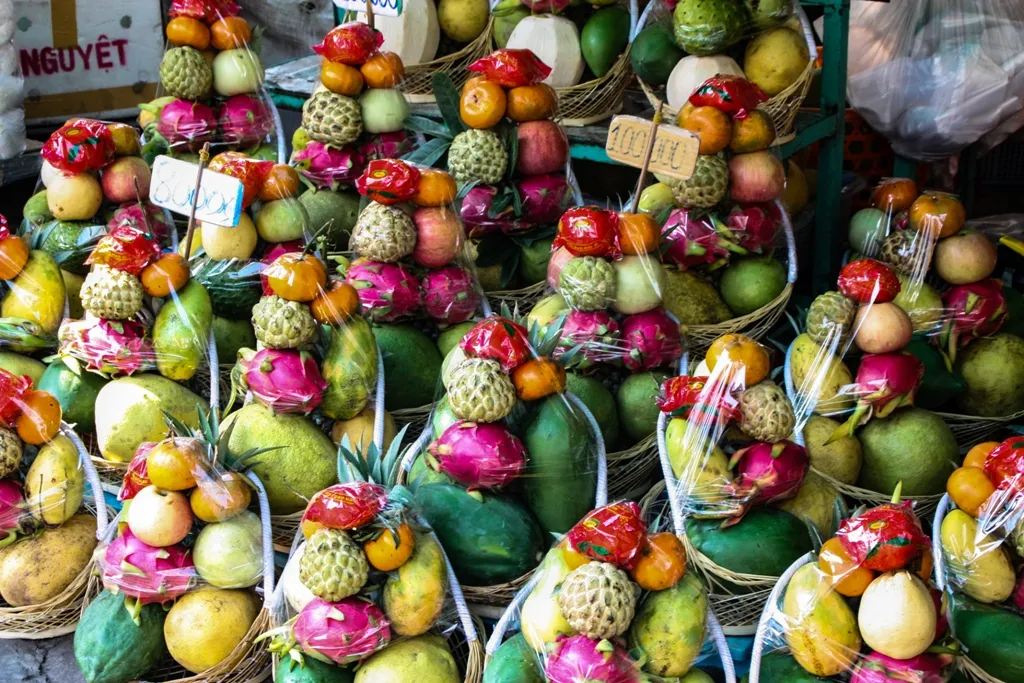
The Victoria Nui Sam Lodge makes an excellent base for exploring these temples. A regular shuttle takes guests to the base of the mountain where many of the temples are located.
